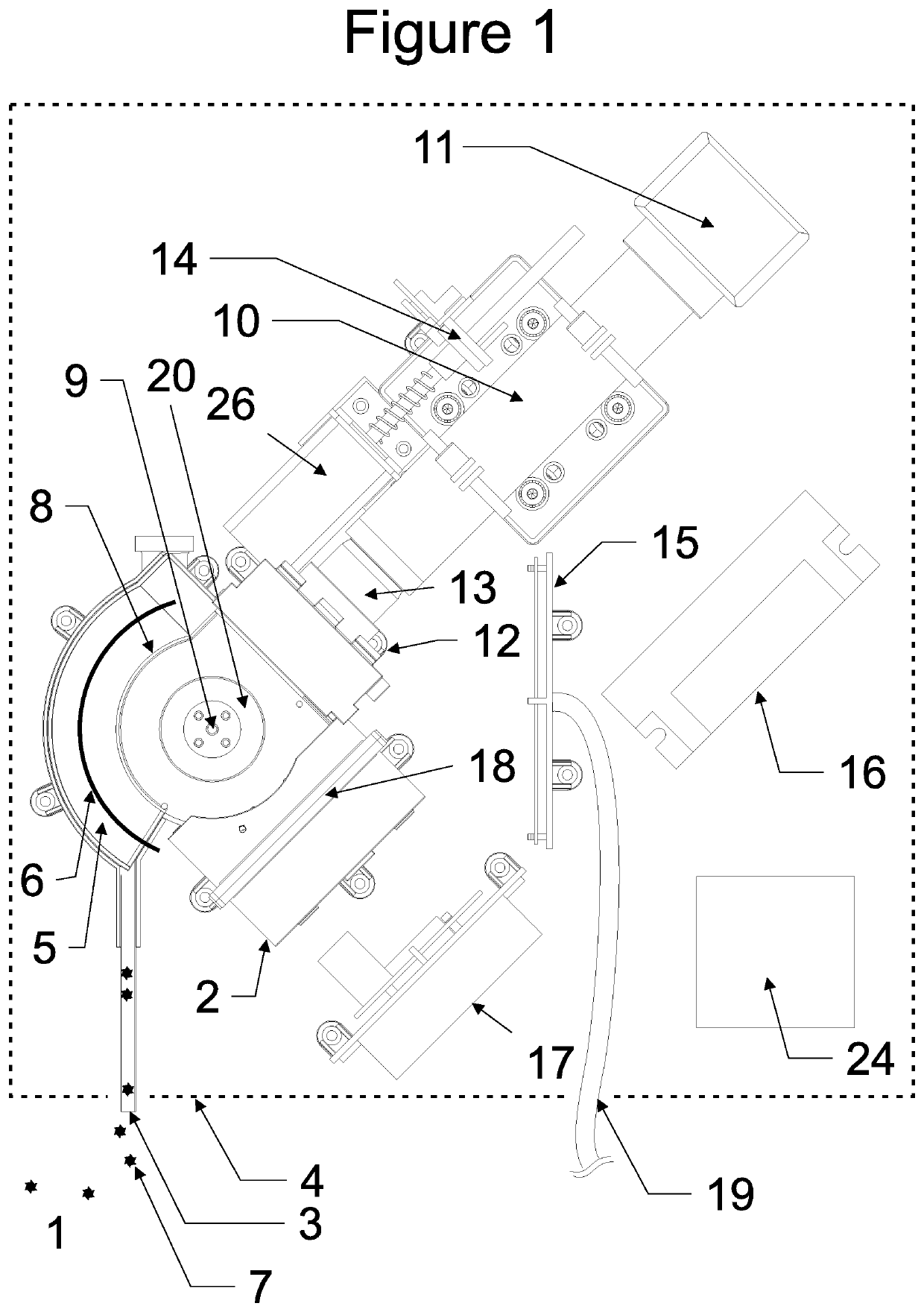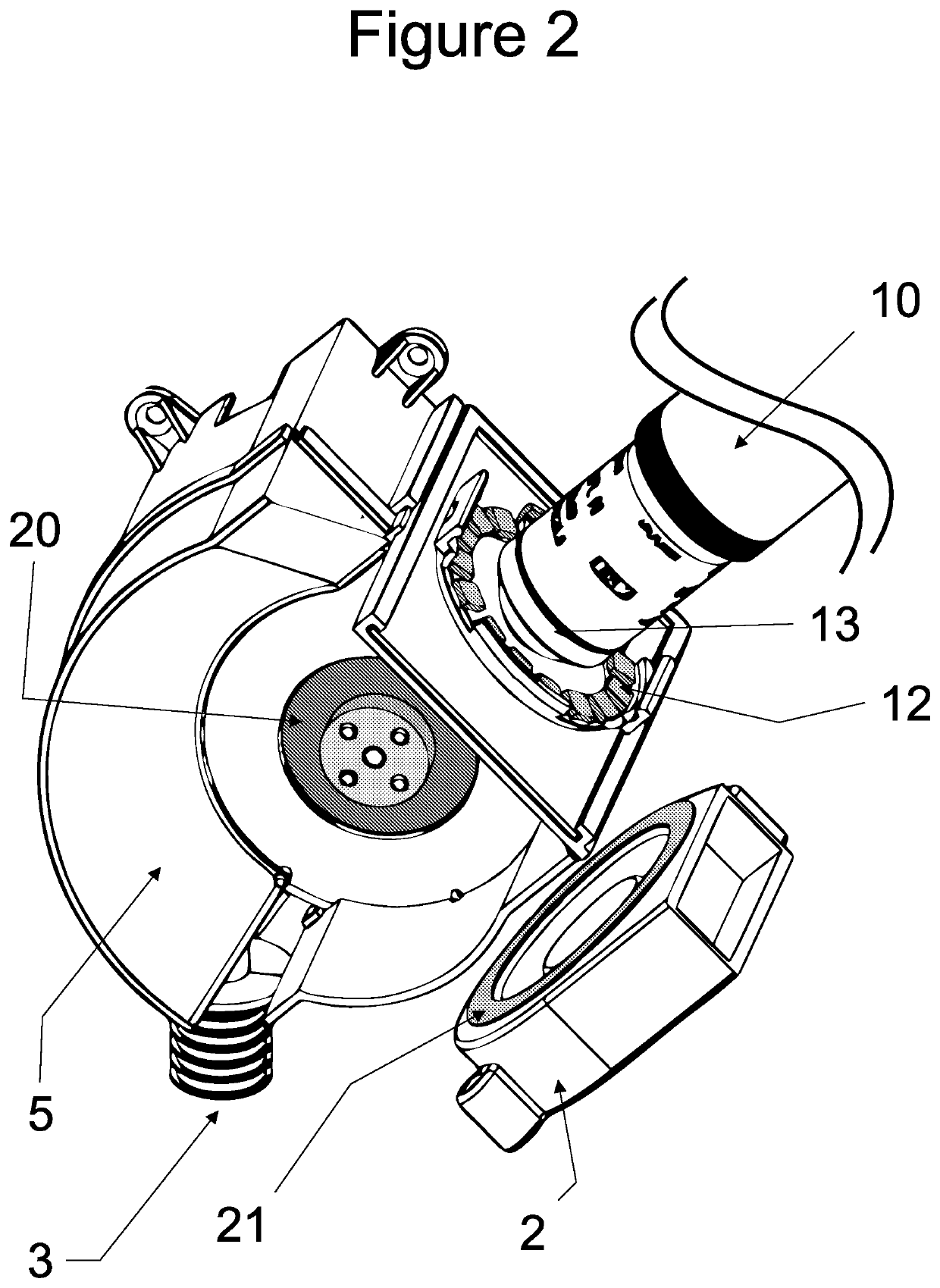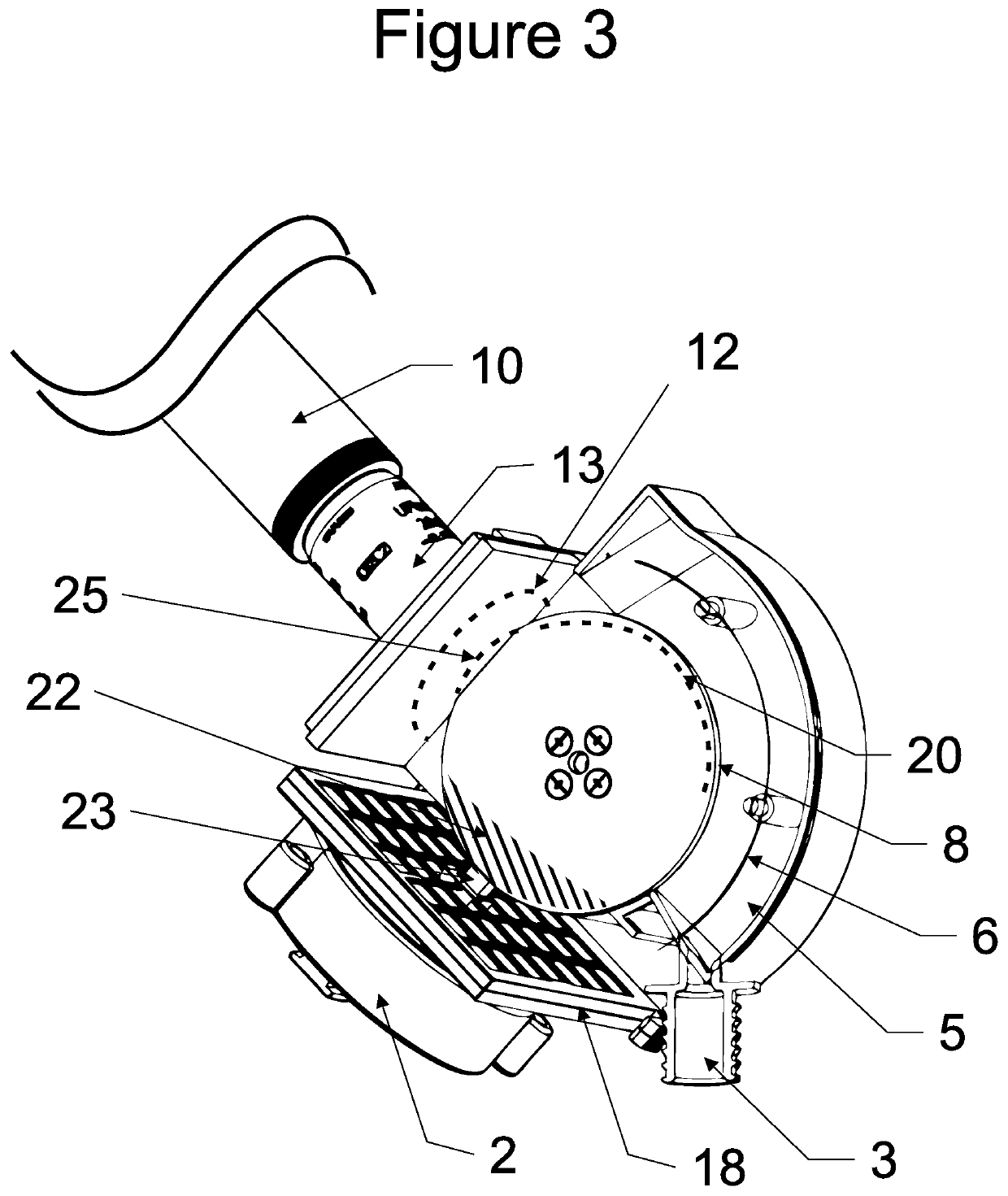Automated airborne particulate matter collection, imaging, identification, and analysis
a technology of airborne particulate matter and automatic collection, applied in the field of environmental technology, can solve the problems of limited reflectivity, increased risk of heart disease, and increased risk of elevated airborne particulate matter, and achieve the effect of efficient and consisten
- Summary
- Abstract
- Description
- Claims
- Application Information
AI Technical Summary
Benefits of technology
Problems solved by technology
Method used
Image
Examples
Embodiment Construction
[0082]The subject matter of this disclosure represents an automated, computerized, electro-mechanical apparatus (FIG. 1, FIG. 2, FIG. 3, FIG. 4, and FIG. 5) utilizing a combination of hardware and software to acquire, image, identify, quantify, and communicate resulting data describing airborne particulate matter (FIG. 1.7, FIG. 6) dispersed in a gaseous medium (FIG. 1.1). Other than installation, the continued supply of the requisite electrical power (FIG. 1.19), the continuity of a communication network (FIG. 1.19 and FIG. 1.15), and periodic maintenance to the apparatus, the operations of the disclosure described herein can have, but do not require, the presence or actions of a human operator. The typical composition of airborne particulate matter in ambient air is comprised of a complex mixture of dust, pollen grains, fungal spores, bacterial cells, viruses, by-products of internal engine combustion that comprise components of air pollution including hydrocarbons, and other comp...
PUM
| Property | Measurement | Unit |
|---|---|---|
| wavelength | aaaaa | aaaaa |
| wavelengths | aaaaa | aaaaa |
| electric field | aaaaa | aaaaa |
Abstract
Description
Claims
Application Information
 Login to View More
Login to View More - R&D
- Intellectual Property
- Life Sciences
- Materials
- Tech Scout
- Unparalleled Data Quality
- Higher Quality Content
- 60% Fewer Hallucinations
Browse by: Latest US Patents, China's latest patents, Technical Efficacy Thesaurus, Application Domain, Technology Topic, Popular Technical Reports.
© 2025 PatSnap. All rights reserved.Legal|Privacy policy|Modern Slavery Act Transparency Statement|Sitemap|About US| Contact US: help@patsnap.com



